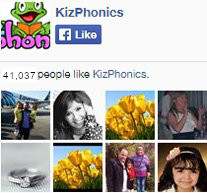How to Write Letters for Phonics Study: A Comprehensive Guide
Mastering the Art of Letter Writing for Phonics
Phonics is the foundation of language learning for children. It is the method by which kids connect the sounds of spoken English to letters or groups of letters and decode words. To enhance this learning process, understanding how to write a letter becomes crucial. In this guide, we'll unravel the steps and techniques of letter writing so that kids can have a strong phonics foundation.
Why is Writing a Letter Important?
When we think of writing a letter, it isn't merely about putting pen to paper. The process teaches children the correct formation and orientation of each letter. As they progress in their phonics study, knowing how writing letter can benefit them immensely.
Steps to Write the Letter Correctly
Choose the Right Materials: Ensure you have materials like pencils, crayons, and appropriate writing paper. This aids in effective letter writing.
Guided Practice: Initially, have kids trace letters before they try writing this letter on their own.
Repetition: Like any other skill, repetition is key. Encourage your child to write a letter multiple times to reinforce learning.
Common Mistakes in How to Letter Writing and How to Avoid Them
Reversing Letters: Common with letters like 'b' and 'd'. Using mnemonics can help. For instance: "b has a belly, and d has a diaper."
Incorrect Formation: Make sure they start their letters from the top and move downwards.
Spacing Issues: Teach them the concept of 'finger space' between words.
Using Resources to Enhance Letter Writing Skills
Explore worksheets and materials from Kizphonics to aid in the phonics journey. Whether you want to learn how to write a letter or need activities for practice, their vast collection has it all. Check out their range of worksheets or search for more on letters.
Facts and FAQs about Letter Writing
What is the best age to introduce letter writing?
Most children are introduced to letter writing around ages 4-5 when they begin kindergarten. However, every child is unique, and some might show interest earlier or later.
Why is letter formation important in phonics?
Correct letter formation ensures that children can read and write fluently. It reduces confusion when learning similar-looking letters.
How often should my child practice writing?
Practice makes perfect. It's beneficial to incorporate written letters exercises into daily routines.
What's the difference between "how are letter written" and "letters to write"?
"How are letter written" refers to the technique or method. "Letters to write" generally refers to a list or set of letters that a child needs to practice.
Final Thoughts
Understanding how to letter writing is an essential component of a child's phonics education. As parents and educators, it's our responsibility to make this process enjoyable and educational. With the right resources and techniques, children will not only master the art of writing a letter but also build a strong foundation for their reading journey.
Remember, every child learns at their own pace. Celebrate their little milestones and continue to support them in their phonics adventure. Happy letter writing!










